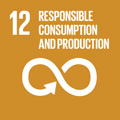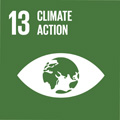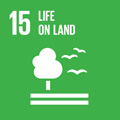- Docente: Gloria Falsone
- Credits: 3
- SSD: AGR/14
- Language: Italian
- Teaching Mode: Traditional lectures
- Campus: Bologna
- Corso: First cycle degree programme (L) in Natural Sciences (cod. 5823)
Learning outcomes
The aim of the course is to provide the student with the knowledge of pedogenesis factors, soil formation and evolution, morphological and chemical-physical characterization of the soil in the field and in the laboratory, the description of soil profiles and the recognition of soil diagnostic horizons. In particular, the student must be able to describe the soil profile having the basic notions to name diagnostic horizons according to international taxonomic systems (Soil Taxonomy USDA and World Reference Base WRB).
Course contents
Prerequisites
The student who accesses this teaching is in possession of a good preparation in the fundamentals of mathematics, chemistry and plant biology. These prerequisites are provided by the teachings of the first period of the first year of the degree.
Theoretical content of the teaching unit (total teaching unit: 16 hours)
1. Basic concepts - The soil, formation and evolution of soil, genetic horizons
2. Factors of pedogenesis - Climate, parent material, vegetation, relief, time
3. Transformation process of organic components - Soil biomass, soil organic matter and its transformations, formation of surface horizons
4. Pedogenetic processes and diagnostic horizons - Soil evolution and state of soil, processes of transformation of material within soil, translocation within soil, addition to soil and loss from soil, environmental contexts and main pedogenetic processes, diagnostic horizons according to the international soil classification systems (Soil Taxonomy, WRB)
5. Characterization of the main morphological and chemical-physical soil properties - Selection and opening of the soil profile; site information collection; organic and mineral horizons description; field analysis
The student will acquire skills related to the knowledge of the role and effect of the main factors of pedogenesis on soil, main processes of soil formation, soil survey methodology and denomination of the main diagnostic horizons
Practical content of the teaching unit (total teaching unit 12 hours)
The practical exercises are: determination of the main soil characteristics (texture, soil pH, carbonate, soil organic matter, etc. etc.) and soil description. The laboratory and field activities will allow a fast transfer of knowledge presented in class into practical applications necessary for understanding of relationships between soil properties and pedogenic processes. The practical exercises will be in collaboration with Geomorphology course.
Readings/Bibliography
Fundamental will be the use of material provided by the teacher (available on Insegnamenti OnLine) and lecture notes.
- G. Certini, F.C. Ugolini. Basi di Pedologia, Edagricole, Bologna 2010. Chapters 1, 2, 3, 5, 6 and 7
- C. Dazzi. Fondamenti di Pedologia. Le Penseur, 2013. Chapters 1, 2, 3, 4, 6, 7, 10, 11 (Ch. 11 only the paragraphs concern on the diagnostic horizons, moisture and temperature soil regimes)
Teaching methods
The course consists of lectures and practical exercises in the field. The slides of lectures will be available on Insegnamenti OnLine.
Assessment methods
The course is part of the integrated course "Geomorfologia e Pedologia". Therefore, the final oral examination will assess the level of knowledge and skills acquired by the student concerning the contents of lectures of the 2 teachings (geomorphology and pedology). Students who have earned at least 18/30 for each teaching will be positively evaluated and the final grade will be the mean weighed value of all teaching grades. The duration of the oral test will be an average of 45 minutes.
Teaching tools
Computer, webcam, projector, Power-point presentations, communication and collaboration platforms (e.g., TEAMS), e-learning platforms (e.g., Kahoot), tools for field activities.
Office hours
See the website of Gloria Falsone
SDGs




This teaching activity contributes to the achievement of the Sustainable Development Goals of the UN 2030 Agenda.
